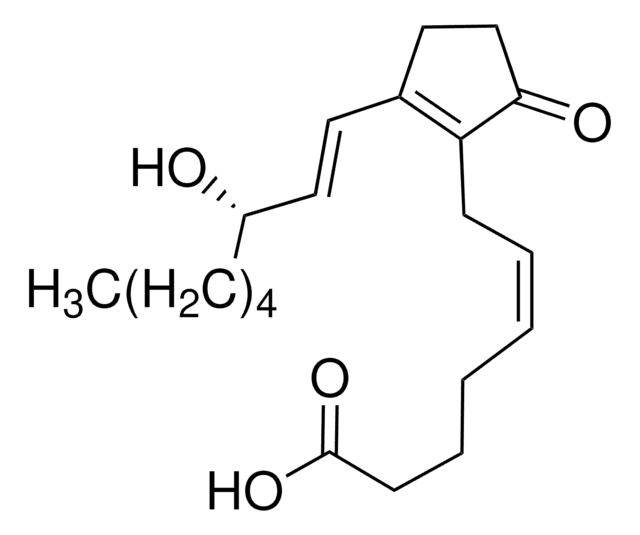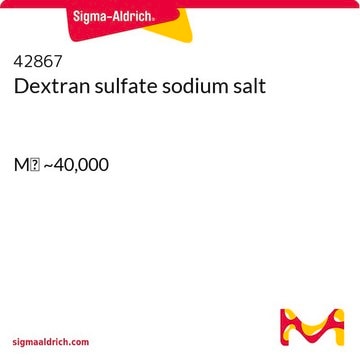P5556
Disolución de poloxamer 188
10%, sterile-filtered, BioReagent, suitable for insect cell culture
Sinónimos:
Nonionic copolymer surfactant
About This Item
Productos recomendados
description
non-ionic
sterility
sterile-filtered
product line
BioReagent
mol wt
average mol wt 8350
concentration
10%
technique(s)
cell culture | insect: suitable
impurities
endotoxin, tested
CMC
0.04 mM
transition temp
cloud point ≥100
HLB
29
InChI
1S/C3H6O.C2H4O/c1-3-2-4-3;1-2-3-1/h3H,2H2,1H3;1-2H2
InChI key
RVGRUAULSDPKGF-UHFFFAOYSA-N
Categorías relacionadas
General description
Application
Biochem/physiol Actions
Storage Class
10 - Combustible liquids
wgk_germany
WGK 2
flash_point_f
Not applicable
flash_point_c
Not applicable
ppe
Eyeshields, Gloves, multi-purpose combination respirator cartridge (US)
Certificados de análisis (COA)
Busque Certificados de análisis (COA) introduciendo el número de lote del producto. Los números de lote se encuentran en la etiqueta del producto después de las palabras «Lot» o «Batch»
¿Ya tiene este producto?
Encuentre la documentación para los productos que ha comprado recientemente en la Biblioteca de documentos.
Los clientes también vieron
Nuestro equipo de científicos tiene experiencia en todas las áreas de investigación: Ciencias de la vida, Ciencia de los materiales, Síntesis química, Cromatografía, Analítica y muchas otras.
Póngase en contacto con el Servicio técnico



